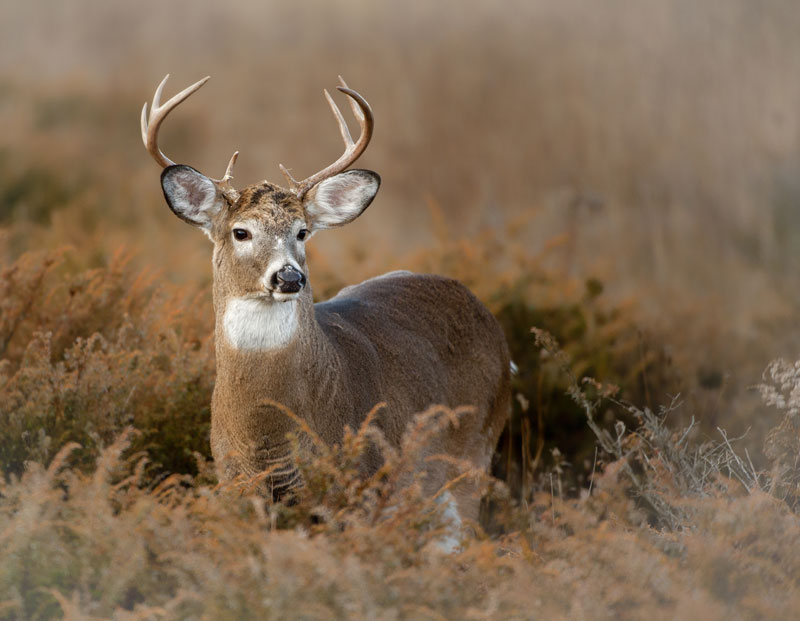White-Tailed Deer
The White-Tailed Deer are native to different parts of North and South America, and is the most widely-distributed ungulate of the former. They have a very large number of subspecies spread across both the continents.
Scientific Name – Odocoileusvirginianus
Classification – Odocoileus
Gender Names – Male – buck, stag; Female – doe; Baby – fawn
Collective Noun – Herd, mob
Length/Size – Varies among subspecies
Weight – Length/Size – Varies among subspecies
Top Speed – Varies among subspecies
Life Expectancy – Varies among subspecies
Mating Season – Varies among subspecies
Gestation Period – 201 days
Special Features – Males carry antlers on the head; females with antlers are extremely rare (1 in 10,000)
Social Structure – Live in herds of varying sizes
Geographical Distribution – USA, Canada, Mexico, Central America, and South America down south to Peru and Bolivia
Natural Habitat – Hardwoods, brush lands and pasturelands, meadows, forested woodlots, brushy areas and croplands
Diet – Plant matters including leaves, shoots, leaves, cacti (desert populations), prairie forbs, and grasses
Predators – Bobcats, Canada lynx, bears, wolverines, and coyote packs

